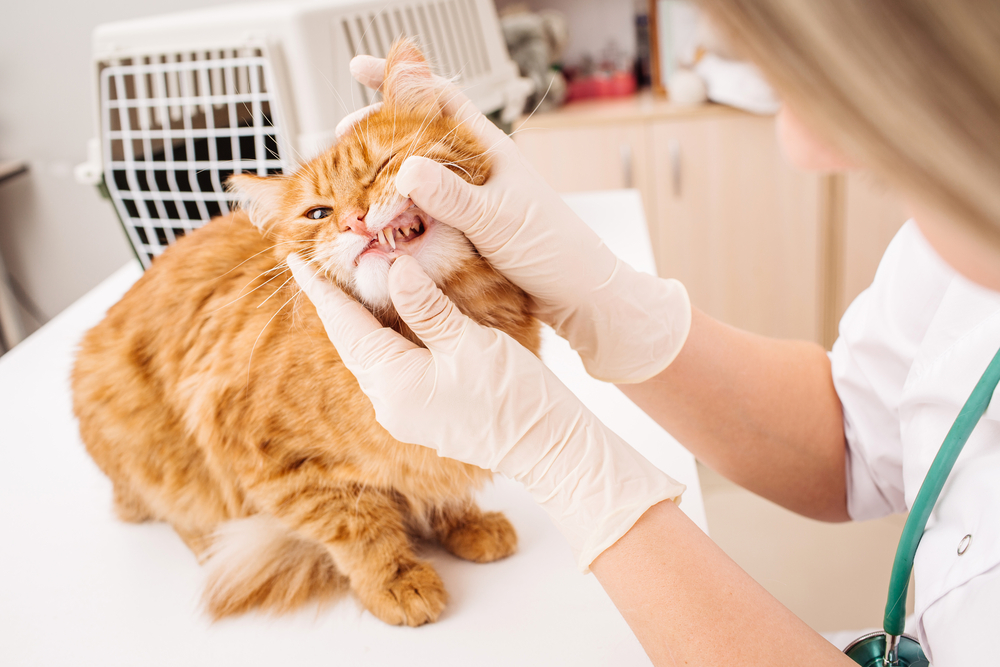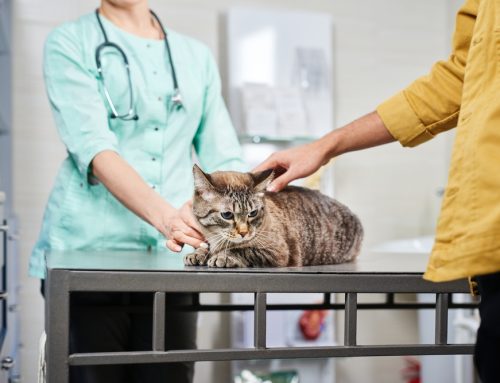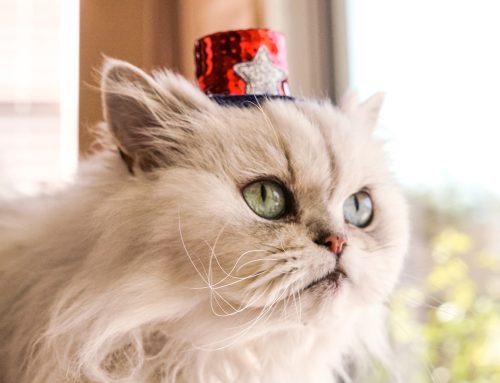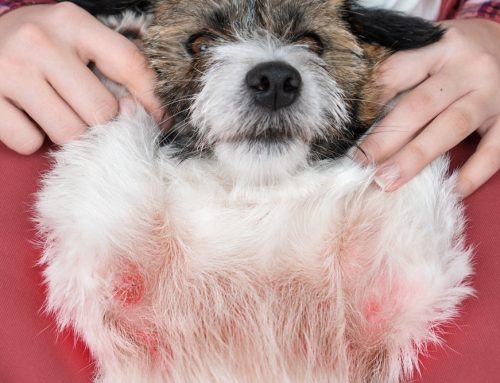Have you ever heard that the tip of an iceberg is only 10 percent of the larger problem hidden below the surface? Well, dental tartar is similar—although it may taint your pet’s smile, the real trouble lies beneath. A host of problems—both in the mouth and beyond—can be related to the layers of mineralized plaque and bacteria clinging to your pet’s teeth.
What is tartar?
Bacteria that normally live in the mouth secrete a film of plaque that covers the tooth surface. If not removed regularly by activities like brushing, minerals in the saliva harden plaque into tartar. Tartar starts accumulating on the outer surfaces of the teeth near the gum line. As dental disease progresses, however, it can build up to cover the entire tooth surface.
What can be hiding underneath tartar?
Tartar that has collected on the crown of the tooth—the portion above the gum line—can be hiding serious problems. Here’s what may lie beneath those layers of mineralized plaque:
- Broken or fractured teeth — Pets fracture teeth by chewing on hard things like bones, antlers, or even rocks. Fractures can appear as a missing tooth tip or as a crack extending down the tooth, and both types will cause your pet to feel pain.
- Exposure of nerve endings — The center of each tooth houses the pulp cavity, which is full of sensitive nerve endings. Teeth with pulp exposure are a source of constant dental pain, making it difficult for your pet to eat.
- Resorptive lesions — Acid in the saliva can cause demineralization of enamel, wearing a pit on the tooth surface. Common in cats, resorptive lesions are similar to cavities that plague human teeth. As resorptive lesions extend closer to the pulp cavity in the core of the tooth, they become intensely painful.
- Root exposure —As diseased gum tissue pulls away from the tooth surface, underlying roots are exposed, leaving them susceptible to deterioration and decay.
- Dental infection — Tartar often hides bacteria, infection, and pockets of pus around your pet’s teeth. Protected below thick tartar, these infections will persist until the teeth are professionally cleaned and antibiotics are prescribed.
Although tartar collects on the tooth crown, it’s the unseen damage below the gum line that poses a larger threat to your pet’s health. When plaque-causing bacteria penetrate the gum line, they cause inflammation of the gums (gingivitis) and periodontal structures that attach the tooth root to the surrounding bone (periodontitis). Left untreated, periodontal disease progresses to root exposure, tooth loosening, and eventual loss.
As if that’s not bad enough, tartar can also cause problems beyond your pet’s mouth. Bacteria can enter the bloodstream and circulate throughout the body. Although it can cause disease anywhere it lands, bacteria often travel to the:
- Heart — Bacteria can latch onto the heart valves, forming a thick plaque that interferes with valve function.
- Liver — Bacteria can cause inflammation (hepatitis) or infection of the liver.
- Kidneys — As the kidneys filter bacteria from the bloodstream, it can accumulate and cause damage to these important organs, affecting long-term function.
If you can see tartar on your pet’s teeth, dental disease has already set in. But, a professional dental cleaning will remove tartar from his teeth and can even reverse mild periodontal disease. Since tartar is a hard, mineralized accumulation, it cannot be removed by brushing or other home remedies. Tartar can only be safely removed by specialized instruments during a professional veterinary dental cleaning. Your veterinarian can assess the degree of your pet’s dental disease and give recommendations for dental cleaning and treatment.
What can I do to prevent dental tartar?
It’s best if you can start with a clean slate, either when your pup or kitten is young or after a dental cleaning. Try some of these tips to inhibit plaque and tartar formation:
- Brush regularly. Though your pet may not love tooth brushing right away, with patience and persistence, most learn to enjoy brushing sessions. Use flavored pet-specific toothpaste, treats, and lots of praise to help make brushing enjoyable for both you and your pet.
- Choose VOHC-approved diets and treats. The Veterinary Oral Health Council only awards their official seal to products that have been proven to be safe for pets and prevent plaque and tartar accumulation.
- Provide plaque-removing chew toys. Choose rubber chew toys with bumps and ridges—they will help rub plaque off your pet’s teeth before it transforms into tartar.
- Perform at-home oral exams. Although regular veterinary oral examinations are critical, you can keep an eye on your pet’s dental health at home. Teach your pet to open wide so you can take a peek inside his mouth on a weekly basis. Look for tartar, red or bleeding gums, root exposure, broken teeth, and anything else that seems abnormal.









Leave A Comment